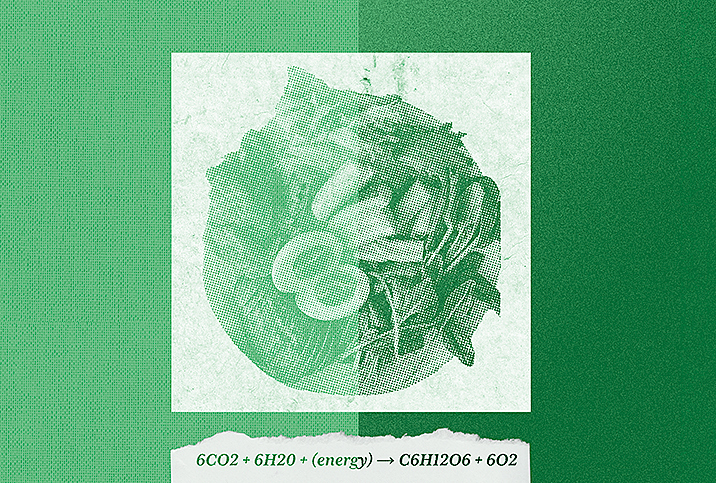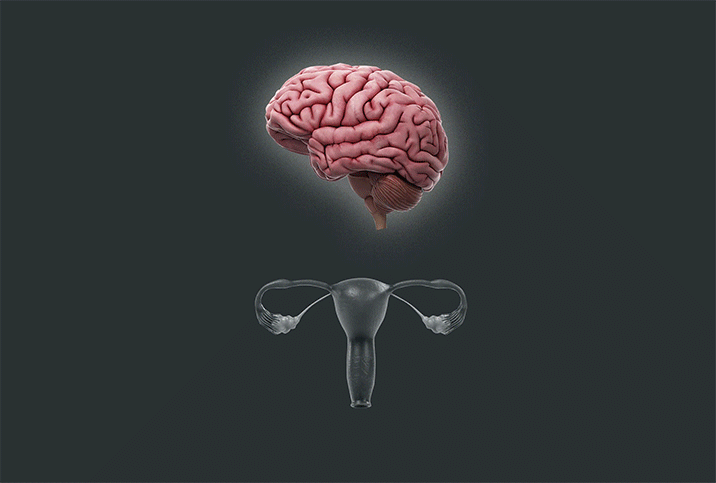What Exactly Is Estrogen Dominance—and Is It Even Real?

The term "estrogen dominance" is used to describe a type of hormonal balance with symptoms such as abnormal menstruation, increased PMS symptoms, insomnia and more.
Contrary to what you may think, estrogen dominance is not necessarily the result of high estrogen levels but instead describes estrogen's relationship to progesterone. It is an unofficial term and debated condition that does not have a clear definition.
Before we dive into the specifics about the theory of estrogen dominance, it's important to mention that estrogen dominance as a diagnosis is not recognized by major medical associations, including the American College of Obstetricians and Gynecologists, the American Academy of Family Physicians and the Endocrine Society.
"Estrogen dominance is based on a bit of truth and fact, and then misapplied to explain many things that it cannot explain," said Nanette Santoro, M.D., professor and E. Stewart Taylor chair of obstetrics and gynecology at the University of Colorado in Denver.
With that important caveat in mind, let's get started.
Reproductive hormones
We need to know a little bit about estrogen and progesterone before we discuss estrogen dominance. Estrogen is one of the two main sex hormones in women. It stimulates the growth and function of your ovaries, vagina, uterus and breasts. However, estrogen also plays a role in bone health, cholesterol levels, cognitive health and other body processes.
A woman's body makes three types of estrogen:
- Estrone is made in fatty (adipose) tissue after menopause. It's the only estrogen form made after you've been through menopause.
- Estradiol is produced by the ovaries before menopause and is the most common type of estrogen in women of childbearing age.
- Estriol is the primary estrogen form during pregnancy.
The second primary sex hormone is progesterone. It affects bone formation as well as the cardiovascular and nervous system, and plays a crucial role in your menstrual cycle, conception and pregnancy. Progesterone prepares the uterus for pregnancy and prevents the uterus from contracting to expel an egg.
Estrogen and progesterone work together. Levels change throughout various life points, including puberty, pregnancy and menopause, which is natural. But the balance between these hormones can shift, which leads us to the concept of estrogen dominance.
The theory of how estrogen dominance happens
Estrogen and progesterone exist in a balance, explained Kecia Gaither, M.D., M.P.H., director of perinatal services at NYC Health + Hospitals/Lincoln in the Bronx in New York City.
"When more estrogen exists circulating in the body in relation to progesterone, theoretically, that is referred to as a condition of 'estrogen dominance,'" Gaither stated.
But what causes there to be more estrogen than progesterone?
Many people think of menopause as causing a drop in estrogen, but in early perimenopause, estrogen levels increase while progesterone levels decrease. This means estrogen levels become atypically high in comparison with progesterone levels.
"What is often called estrogen dominance, and causes symptoms that bring women to medical attention, are the fluctuating hormones that occur during the perimenopause," Santoro said.
She explained that women can experience higher highs and lower lows in their estrogen excursions and sometimes fail to ovulate from time to time, thereby being exposed to significantly lower progesterone levels compared with the levels they experience during an ovulatory cycle.
"These perturbations can cause women to have hot flashes [usually mild], irritability, sleep disturbances and sometimes mood issues," Santoro added.
Perimenopause is not the only suggested cause of estrogen dominance, though.
Causes and symptoms attributed to estrogen dominance
Gaither stated that other supposed causes of estrogen dominance include hormone replacement therapy (HRT), environmental influences such as xenoestrogens (pesticides, growth hormones in meats, and plastics that cause endocrine disruptions) and stress.
The main symptoms attributed to estrogen dominance include:
- Increased PMS symptoms
- Insomnia
- Brain fog and memory problems
- Weight gain
- Fibroids
- Breast tenderness
- Missed or irregular periods
- Hypermenorrhea (heavy or prolonged menstrual bleeding)
- Fatigue
- Low sex drive
- Anxiety and/or depression
- Bloating
It is important to highlight that for many of these symptoms, there is not a causal relationship established between elevated estrogen in relation to progesterone and the symptoms. This is where the debate comes in. Biochemical estrogen dominance does not equal "estrogen dominance" as a syndrome.
Santoro said there is no magical balance between estrogen and progesterone that is necessary for a woman to feel well.
"For example, women who have had a hysterectomy and have their ovaries removed, requiring hormone therapy for menopausal symptoms, do just fine with estrogen therapy only and do not require any progesterone whatsoever," she said. "In fact, progesterone may increase their risk of certain conditions.
"The one organ in which there is a [consequential] balance between estrogen and progesterone is in the uterus," Santoro added.
A shift toward more estrogen increases a woman's risk for endometrial cancer, according to the American Cancer Society.
"In general, estrogen encourages growth of the uterine tissue, and progesterone stops growth," Santoro said. "So if women are exposed to estrogen without progesterone, their uterus is at risk of having a continuous signal to grow and proliferate, and over time, this can increase the risk of uterine cancer."
It must be noted that an imbalance between estrogen and androgen hormones in men can lead to enlarged male breasts, or gynecomastia, infertility and erectile dysfunction (ED). However, this is not the same concept of estrogen dominance, as these conditions in biological males relate to estrogen and testosterone. If a man's body produces too much estrogen or not enough testosterone, the male breast tissue may enlarge.
Treating the symptoms
Gaither said supplementation with progesterone as prescribed by a healthcare provider can sometimes help if progesterone is deficient.
However, Santoro advised that because there are a variety of ways to treat the described symptoms, it usually pays to have an evaluation from a healthcare provider.
"You can find the specific cause and arrive at a treatment that is best for the woman rather than make a snap judgment that this is due to 'estrogen dominance,'" Santoro said.
Progesterone may still be the prescribed treatment method, depending on your symptoms, but your doctor may explore other options.
For example, Gaither said diet can play a significant role in managing symptoms. She recommended a plant-based diet, which is thought to be beneficial due to the presence of phytoestrogens (which naturally occur in fruits, legumes and vegetables) and might promote healthy estrogen levels. Fiber may also help reduce estrogen levels and protect against certain cancers, such as breast cancer.
Due to the wide-ranging symptoms often attributed to "estrogen dominance," and the variety of possible causes of these symptoms, if you have concerns about how you are feeling and what you are experiencing during perimenopause, the best move to make is to speak to your OB-GYN.


















